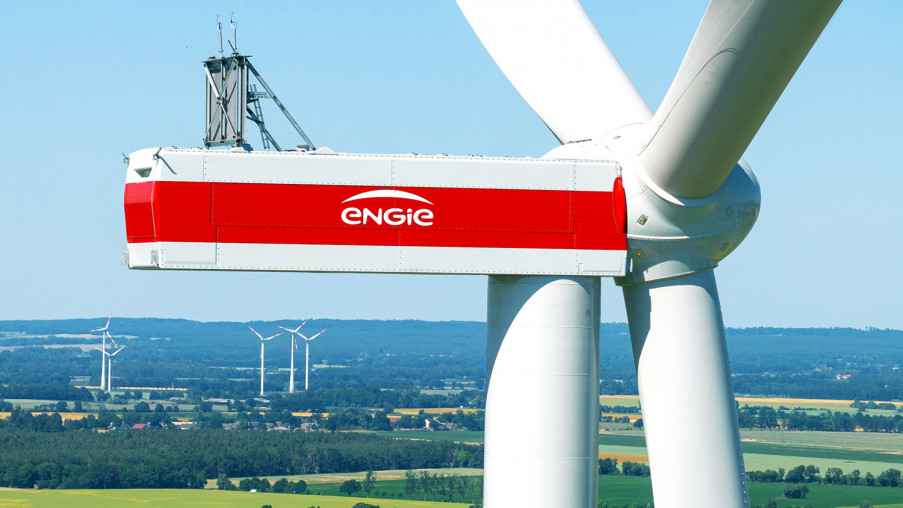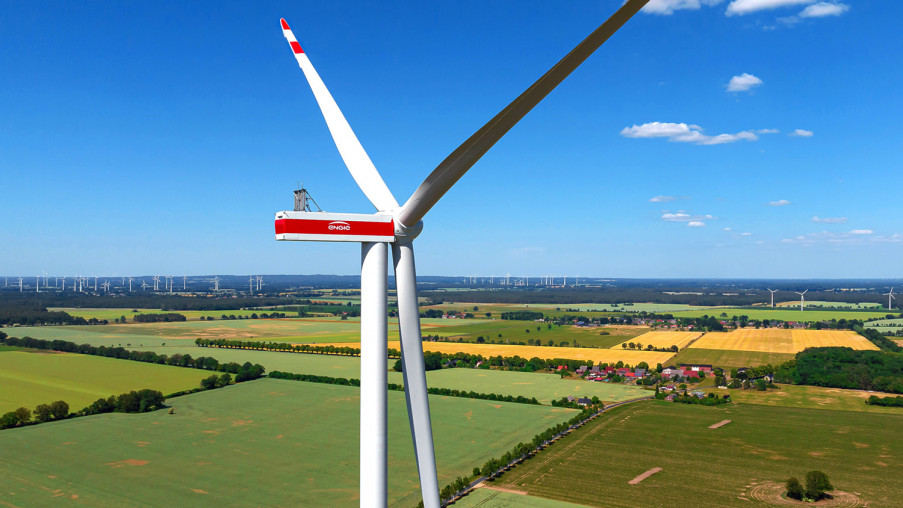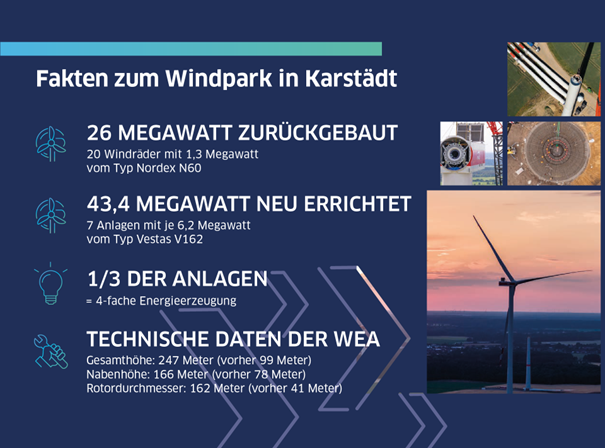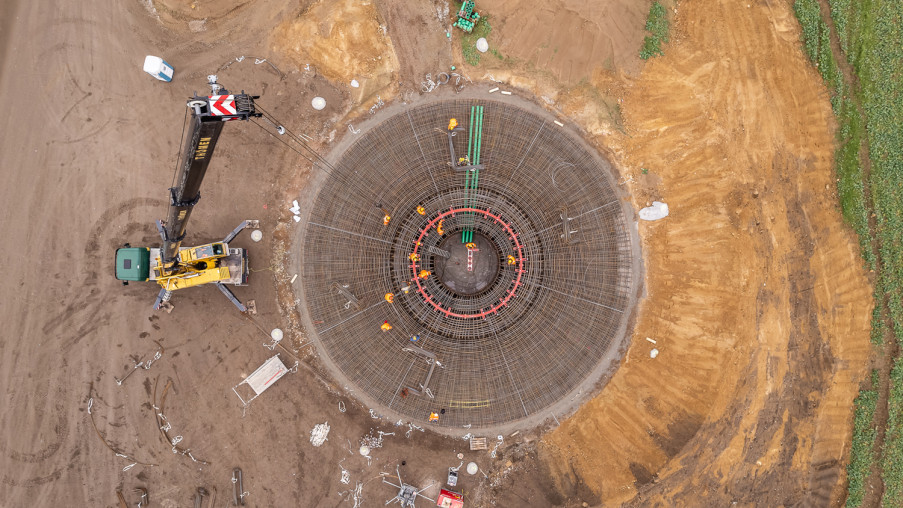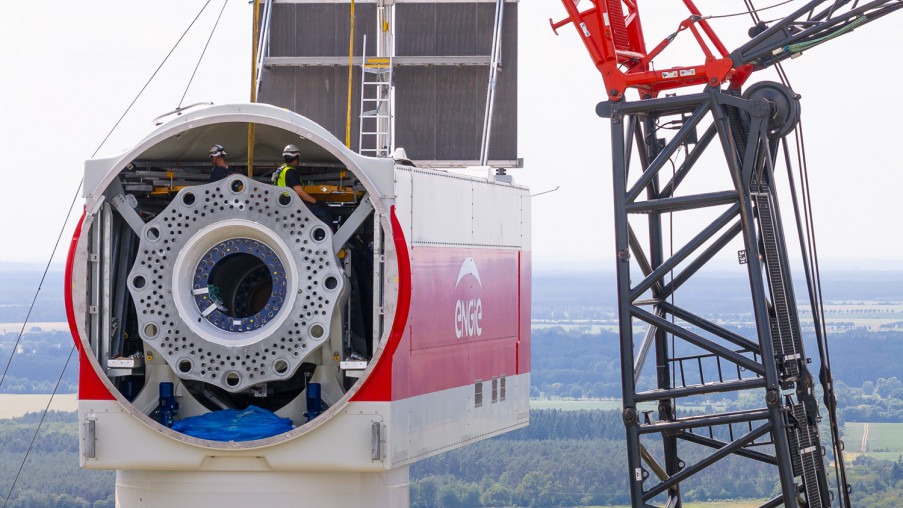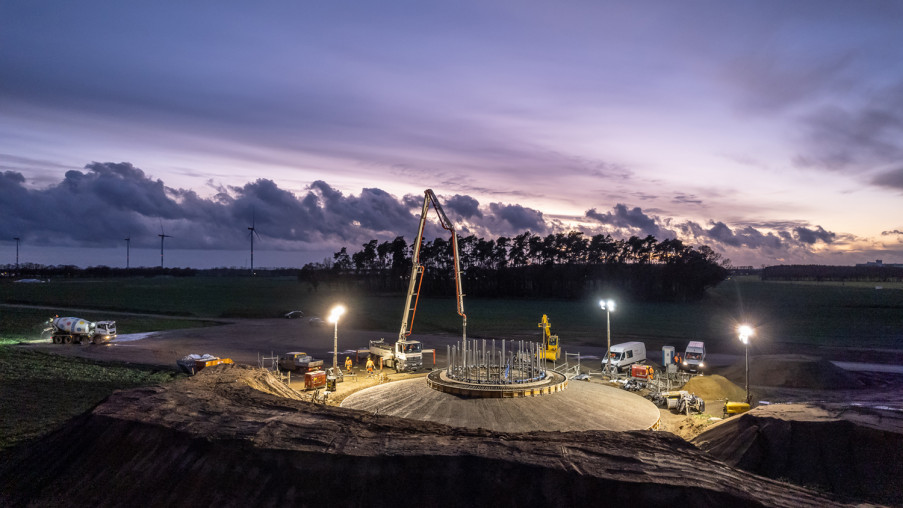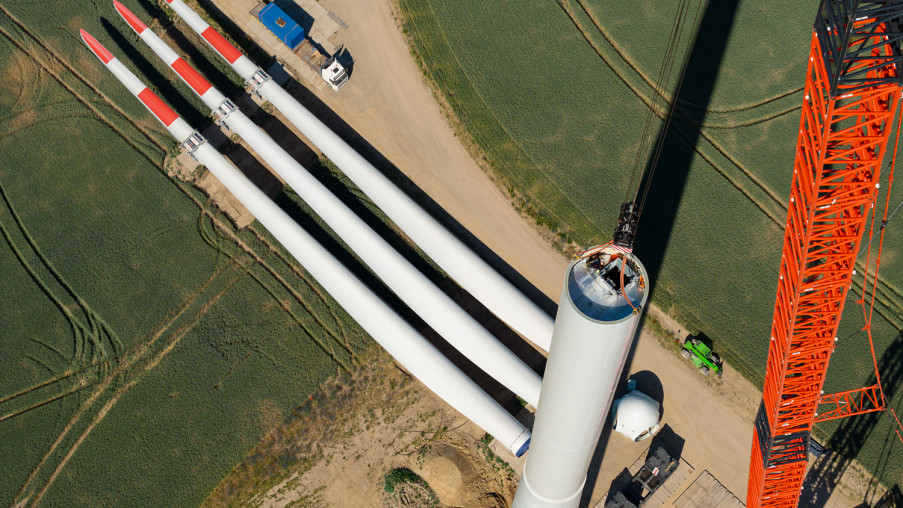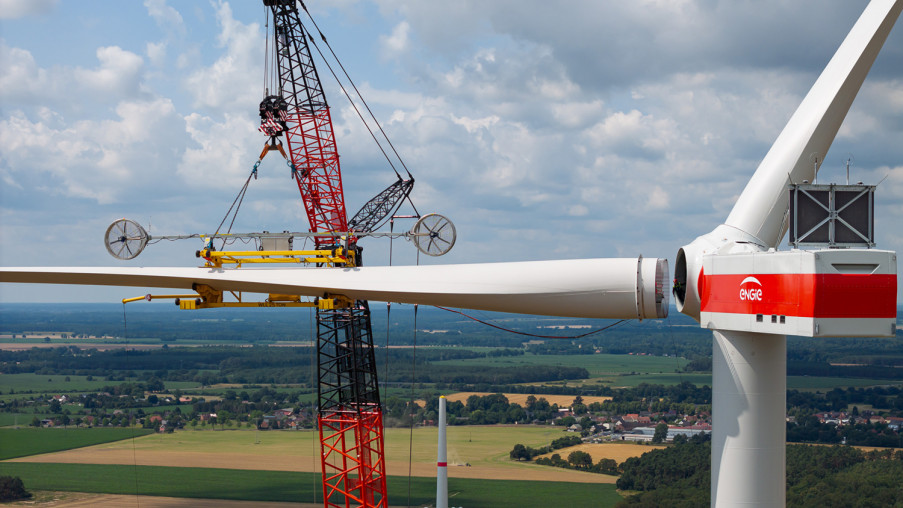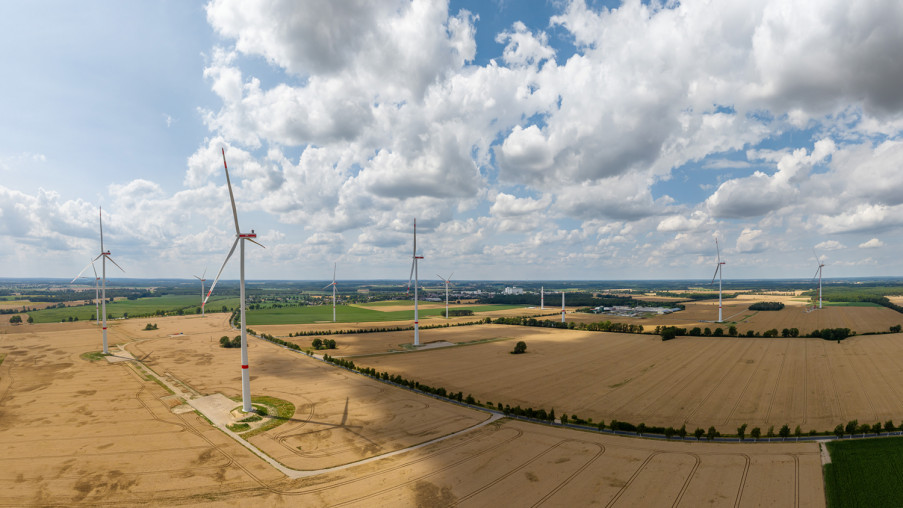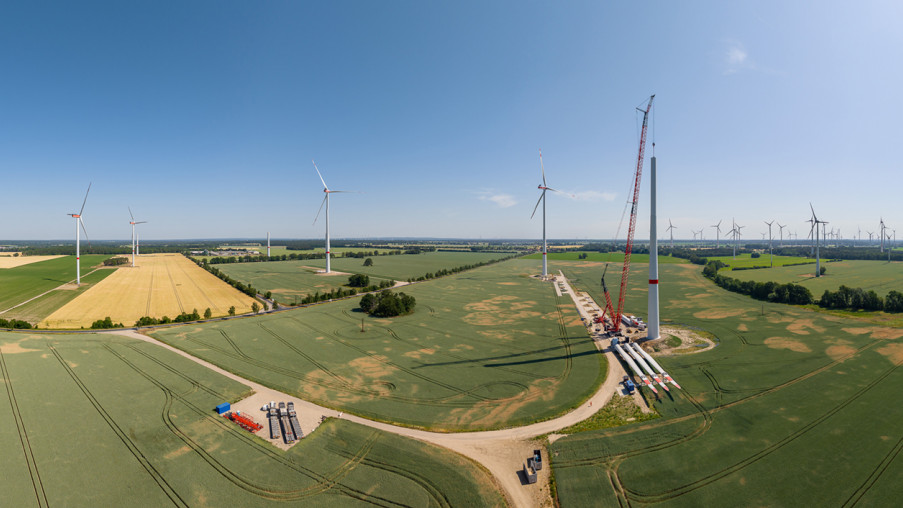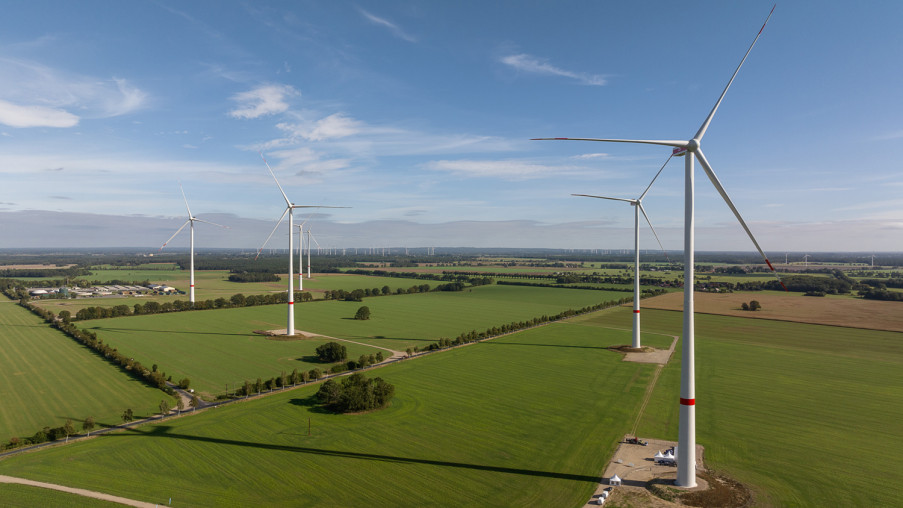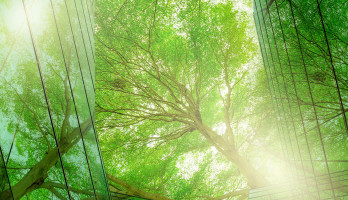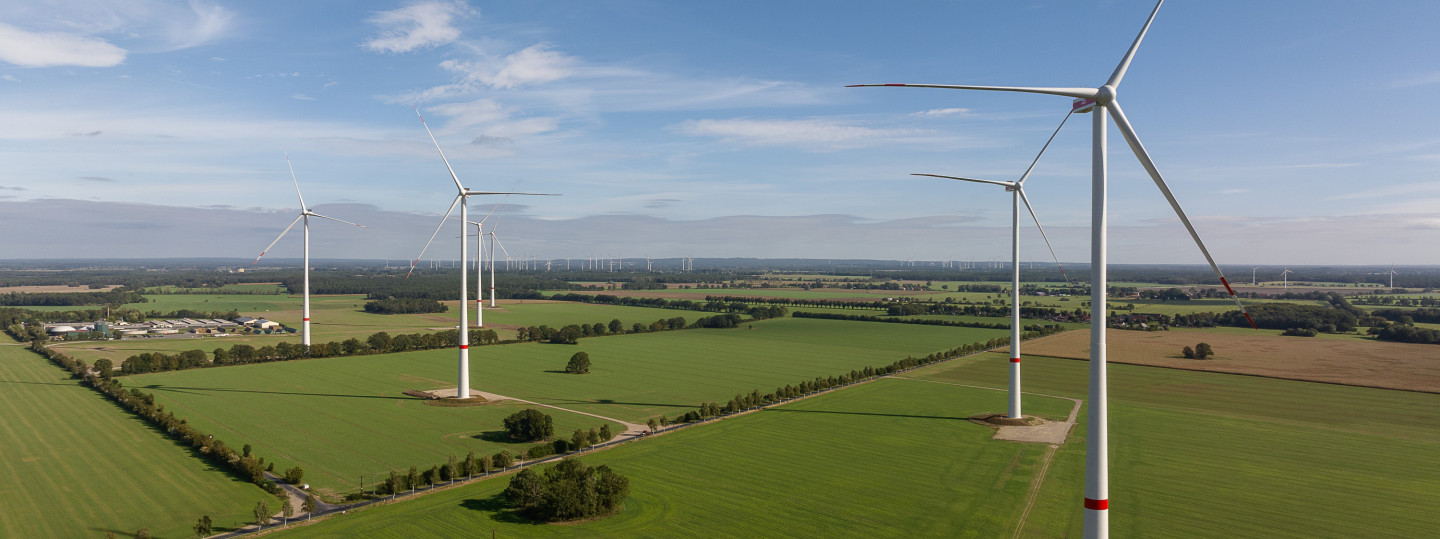
Onshore on the rise - an insight into repowering at ENGIE
ENGIE is advancing the energy transition in Germany with important projects. This also includes the repowering of wind turbines. In this article, you will find out what this is all about - including insights into a successful repowering project in the community of Karstädt in Brandenburg.
What does repowering mean?
Faster, higher, further - this also applies to wind turbines. Not only the expiry of state subsidy models and the associated challenge for the economic viability of 20-year-old wind farms are a reason for repowering, but also the optimal use of scarce land for energy generation.
In the energy sector, we speak of repowering when old power plants or parts of them are replaced with new ones. In German, this is also called power plant renewal. In this process, the entire plant or individual components are replaced with new plants that are usually more efficient. This makes it possible to generate significantly more energy on the same area.
Technical upgrades: repowering and the energy transition
The concept of repowering plays an important role in the energy industry and in securing renewable electricity production - especially in the field of wind power. Due to the rapid technical development in the energy sector, older wind turbines cannot keep up with modern turbines. While very old wind turbines, for example from the 1990s, only have an installed capacity in the lower three-digit kilowatt range, today's turbines make it into the six-megawatt and more range. If we think about how difficult it is for our society to release land for renewable energies, the repowering of less powerful wind turbines makes a lot of sense. Every additional kilowatt hour we can produce with wind power is important for achieving climate targets and the energy transition.
Why there are also economic reasons for repowering
Another important argument for repowering is the expiry of the “EEG” feed-in tariff. While the operators of wind farms received a price for their electricity during the term of the EEG that was guaranteed to them for many years, it is now subject to the fluctuations of the electricity market for wind turbines with expired feed-in tariff entitlements. Thousands of sites will be affected by this in the coming years, and in many cases operators are wondering to what extent they can still be operated economically at all.
Repowering ensures the economic continuity of wind power sites. However, replacing old technology that is no longer eligible also represents a complex new project. The old turbines must be dismantled and disposed of, and new wind turbines must be purchased. Due to the dimensions of today's wind turbines, this can prove to be an enormous logistical challenge, depending on the location. The biggest task, however, is creating the legal planning requirements and obtaining the necessary permits for construction and operation. This process spans several years, even for repowering projects.
Repowering is part of ENGIE's strategy
We at ENGIE Deutschland Erneuerbare GmbH consider repowering to be an important piece of the energy transition puzzle.
"With repowering, we are implementing our ambitious goals for the expansion of renewable energies not only through new projects, but equally through the further development of existing plants." - Ralf Schürkamp, Managing Director ENGIE Deutschland Erneuerbare GmbH
Successes have already been recorded: In 2021, we were awarded several contracts in the September tender for onshore wind turbines issued by the German Federal Network Agency (BNetzA). This involves repowering a total of 50 megawatts of wind power capacity - including: our site in Karstädt, Brandenburg. We have been operating several wind farms in the Prignitz district since 2001, the first of which we have now upgraded.
Repowering in Karstädt - fourfold power generation with one third of the turbines
The modern wind farm in Karstädt-Waterloo in northwestern Brandenburg was officially inaugurated in September 2023. Before the repowering, there were 20 wind turbines here. Today, there are only seven significantly more efficient models.
The community of Karstädt benefits from the conversion of the wind farm. Mayor Udo Staeck delivered his congratulations on the project's success in person at the inauguration ceremony. The highly efficient wind farm contributes to the energy turnaround in the region and generates exclusively green electricity. The conversion is also financially worthwhile for the community. Significantly more than 200,000 euros per year are expected to flow into the municipality's coffers from April 2024 - without taking into account the trade tax. The reduction from the previous 20 to the current seven wind turbines also visually softens the landscape. The wind turbines are now spaced approximately 500 meters apart.
Strong performance through repowering
The repowering has more than paid off. Today, the wind farm in Karstädt generates four times as much energy as before - on the same area! To achieve this, we installed seven new Vestas V162 turbines, each with an output of 6.2 megawatts. The upgraded wind farm now has a total output of 43.4 megawatts. Previously, it had only 26 megawatts.
A review of the repowering project: the rebuild in detail
After initial preparatory work in 2021, the real work began in 2022: the dismantling of the old turbines took place. Dismantling old wind turbines sounds simple, but in practice it is a real challenge. Wind turbines are complex technical systems; engineers in this field deal with components of immense dimensions. The blades of the old turbines alone, which had to be dismantled together with the rotor at a height of 70 meters, weigh around 4.5 tons each. The nacelle, or nacelle, weighs 50 tons. By way of comparison, an average SUV weighs just over two tons. Anyone who doesn't use heavy equipment in the form of a heavy-duty crane will be out of luck. In addition, the weather has to play along. If the wind is too strong, "rien ne va plus," as our French colleagues at ENGIE would say. Fortunately, the weather in Karstädt always cooperated.
Conclusion: repowering as a successful model for energy supply
Turn old into new: In the case of repowering, this is a great thing. First-generation wind farms whose subsidies are coming to an end can be economically upgraded and thus put to profitable use again. Repowering is a real alternative for wind farm operators and makes it possible to continue using the site. In addition, repowering helps to achieve the German government's expansion targets for wind power. Professionally carried out, repowering is by no means an environmental problem. The old turbines can be recycled in many ways, as we have successfully demonstrated.
Do you have any questions?
ENGIE Deutschland GmbH
